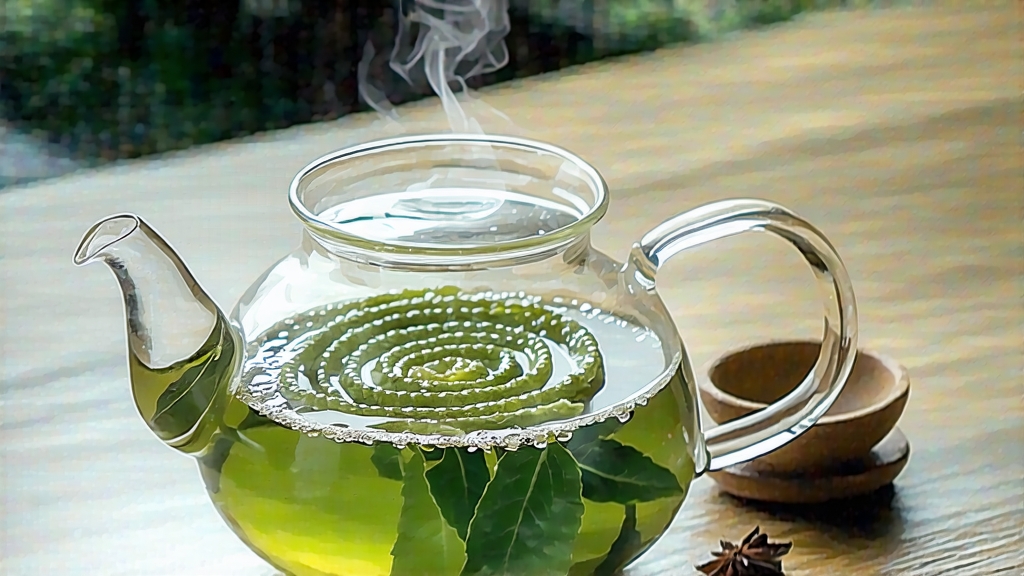
Biluochun, whose name translates literally to “Green Snail Spring,” is one of China’s ten most celebrated teas, yet it remains a delicate secret outside serious tea circles. Grown on the mist-locked islands of Dongting Mountain in Taihu Lake, Jiangsu Province, this green tea is prized for its tiny, spiral-shaped leaves, an intoxicating bouquet of flowers and ripe fruit, and a softness so refined that the Chinese compare it to “a whisper from a spring morning.” To understand Biluochun is to step into a 1,200-year-old story that interweaves imperial taste, Buddhist monks, lake microclimates, and the patient choreography of human hands.
Historical roots
The first reliable mention appears in the Tang Dynasty (618-907) travelogue of Lu Yu, the “Sage of Tea,” who noted an unusually fragrant tea sent from Gusu (modern Suzhou) to Chang’an. By the late Song Dynasty the tea was called “Xia Sha Ren Xiang”—“Scary Fragrance”—because its perfume was so arresting that palace ladies feared it might be an aphrodisiac. The Kangxi Emperor (r. 1661-1722) sampled it during a southern inspection tour, found the name vulgar, and rechristened it Biluochun to honor its jade color, curly shape, and spring harvest. Imperial patronage pushed production from a few monastic gardens to hundreds of small family plots scattered across Dongting’s East and West peaks.
Terroir and cultivars
Dongting Mountain is actually two islands rising from a shallow, 2,400 km² freshwater lake. Warm days, cool nights, and perpetual fog slow leaf growth, concentrating amino acids that translate into sweetness. The soil is quartz sandstone mixed with lake silt, porous yet mineral-rich. Two main clonal cultivars dominate: Dongting Qunti (the seed-propagated “community bush”) and Dongting #7, a 1970s selection that yields earlier and tolerates modern horticulture. Purists insist the original Qunti, often interplanted with loquat, plum, and tangerine trees, gives the most complex cup because the tea bushes absorb floral volatiles from neighboring blossoms.
Harvest calendar
Authentic Biluochun is picked only eighteen days each year, beginning when lake mist still hangs like silk and the air temperature hovers around 12 °C. The standard is one bud plus the just-unfolding first leaf, no longer than 2.5 cm, weighing 0.32 g per hundred shoots. A skilled picker gathers barely 600 g of fresh leaf in a dawn shift; 5.5 kg of this is required to yield 1 kg of finished tea. The highest grade, Supreme Jade Spiral, demands 70 % single buds and must be processed within four hours of plucking to prevent enzymatic browning.
Crafting the spiral
Withering is brief: the leaves are laid 2 cm deep on bamboo trays set in shaded courtyards for 30–40 minutes, just long enough for the grassy “green” note to dissipate. The critical step is hand-firing in a 180 °C wok, a dance the locals call “three presses, three lifts.” The master uses only the heel of the palm to press the leaves against the iron surface, curling them into tight spirals while moisture escapes in audible puffs. Temperature is judged by touch; when the wok is too hot the artisan’s hand blisters, too cool and the leaf sticks. After 25 minutes the leaves have lost 70 % of their weight, turned jade green, and taken on the signature spiral. A final low-temperature bake at 60 °C for 20 minutes sets the aroma and reduces moisture to 4 %, ensuring shelf stability without sacrificing vibrancy.
Chemistry in the cup
Laboratory analysis of freshly processed Biluochun shows 4.8 % free amino acids (notably theanine and glutamic acid), 14 % catechins, and 0.9 % soluble sugars. The ratio of amino acids to polyphenols—roughly 1:3—creates the tea’s hallmark “sweet before bitter” progression. Volatile compounds include linalool (lavender), geraniol (rose), and β-ionone (violets), traceable to both the leaf itself and the interplanted fruit trees. Because the leaf is so young and the firing so brief, chlorophyll remains intact, giving the liquor an almost neon clarity.
Grading spectrum
Chinese national standard GB/T 18957-2008 divides